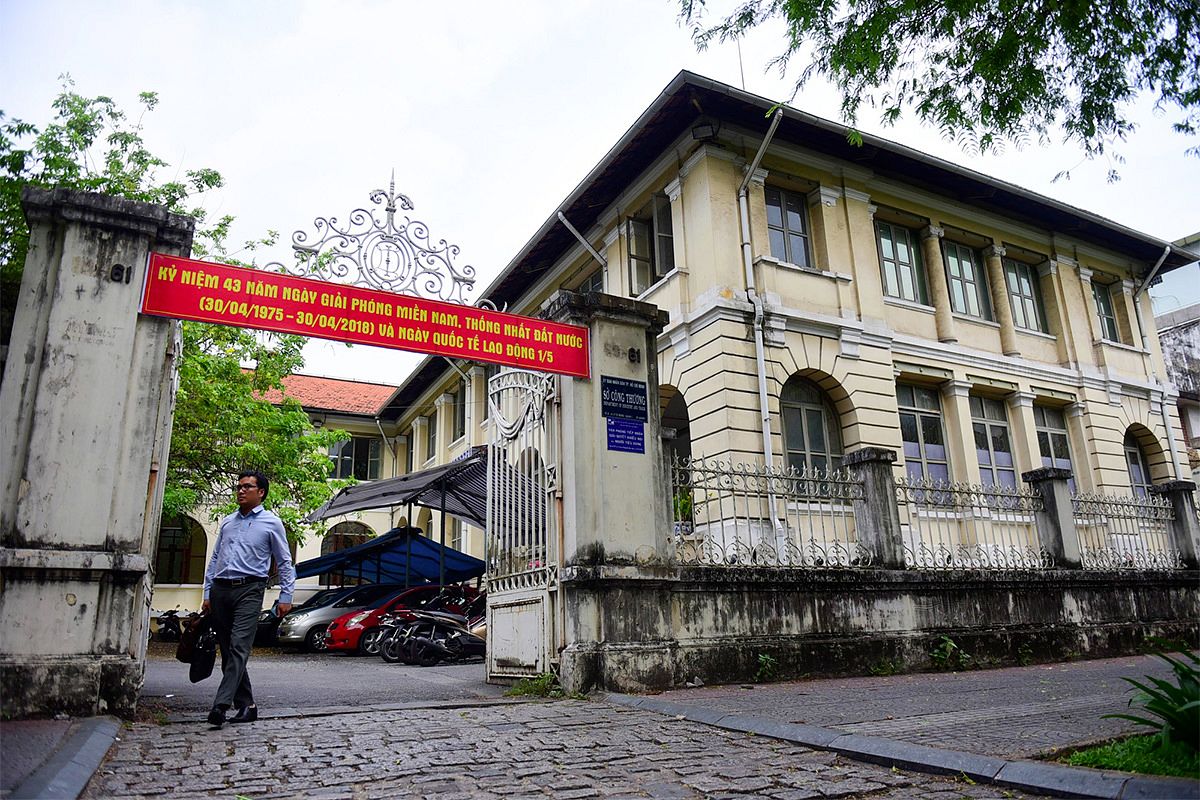Exactly five years ago this week, construction workers began tearing apart the Saigon Tax Center building to make way for a new development project.
The ornate and instantly recognizable facade of the Tax Center had been part of the architectural makeup of downtown Saigon for decades, so the decision to demolish it inspired much criticism by experts and members of the public.
In response to concerns raised by Saigoneers, the municipal People’s Committee announced that some architectural features of the building would be preserved to be re-incorporated into the new structure. These include features like the old Saigon Tax Trade Center signs, the mosaic staircase floor, and the original bronze handrails and balustrades, among others.

The staircase at the launch of the Société Coloniale des Grands Magasins in 1920. Image via Flickr user manhhai.
Out of these elements, experts were particularly anxious about the preservation of the mosaic staircase, as its intricacy would require advanced levels of restoration skills and highly specific materials. A recent online dialogue session organized by the Young Historian Foundation has answered some questions regarding the fate of this prized staircase five years on, as reported by Tuoi Tre.
The online session was joined by Nguyễn Thị Hà, an archaeology professor at the History Department of the Ho Chi Minh City University of Social Sciences and Humanities, who’s part of the team tasked with preserving the mosaic work.
According to Hà, preservation work is very time-consuming and the team is still in the process of restoring it. She confirmed that Saigon authorities had approved the reconstruction of the staircase in the original dimension in the new structure to be built on the same lot.

The interior of the Tax Center in October 2016 after the mosaic tiles were removed for preservation. Photo by Lê Quân via Zing.
When asked about the condition of the mosaic, she shared that the tiles were kept intact during the dismantling when the Tax Center went down, but there are broken details and missing tiles from previous rounds of renovation. To replace broken tiles, Hà said that the team has found a source of new tiles from a factory in southern France.
It was very easy to miss the mosaic staircase even when the Tax Center still existed, as few shoppers would stop amidst their languid browsing to look beneath their feet. But there is significant evidence pointing to the staircase’s historical status as a prime example of the ancient mosaic art of zellij (الزليج), a specialty of the Moroccan city of Fes, created using tiny enamel-covered chips known as tessera (plural tesserae).
The ancient craft of zellij dates back at least 1,200 years and is widely regarded as a pinnacle of human artisanship. Each chip was created by hand through a process of kneading, drying, enameling, baking and cutting. According to writer Trần Thị Vĩnh Tường, one of the characteristic features of zellij is the geometric symmetry of many of the patterns achieved by Moroccan artists, despite not having pencils and compasses.


The staircase in 2014. Photos by Dona Đỗ Ngọc.
In 2016, a 40-story commercial-hotel complex was announced for the Tax Center lot at the intersection of Le Loi and Nguyen Hue boulevards. As a partnership between Japanese hotel firm Okura Nikko Hotel Management and SATRA, the late Tax Center’s operator, it was set to open in 2020, featuring 250 guest rooms, a rooftop bar, Japanese restaurants, a multi-purpose banquet and conference space, a gym and an outdoor pool. We all know how that year turned out, and the lot remains undeveloped today, while the fate of the mosaic staircase is once again a question mark.















